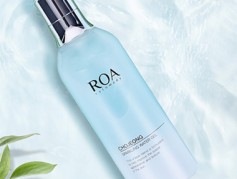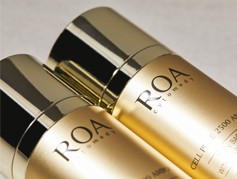
Title: Unleash Your Curls: The Benefits of Curl Rejuvenation Sessions
Stephany
2024-10-25 17:31
3
0
본문
Maintaining length with natural hair can be a common concern for many individuals who choose to embrace their natural texture. Natural hair is prone to dryness, breakage, and damage if not properly cared for. However, with the right techniques and consistent care, you can achieve healthy, long natural hair.
2. **Deep Conditioning**: Natural hair tends to be drier than other hair types, so it's essential to keep it well-moisturized. Use a deep conditioner at least once a week to hydrate and nourish your strands, promoting elasticity and preventing breakage.
2. **Try Argan Oil**: Argan oil is another excellent natural product for managing frizz. Rich in antioxidants and vitamins, argan oil can help smooth the hair cuticle and reduce frizz. Apply a few drops of argan oil to damp hair before styling to keep frizz at bay.
Frizzy hair can be a common and frustrating issue for many people. Factors such as humidity, dryness, and damage can contribute to the frizz, leaving hair looking unruly and difficult to manage. While there are many products on the market that promise to tame frizz, natural options can be effective and gentle on the hair. Here are some tips on how to manage frizz using natural products:
3. **Aloe Vera Gel**: Aloe vera gel is a natural humectant that can help lock in moisture and tame frizz. Apply a small amount of aloe vera gel to damp hair, focusing on the frizzy areas. This will help hydrate the hair and create a smoother appearance.
1. Hydration and Moisture: One of the key benefits of curl rejuvenation sessions is the focus on hydration and moisture. Curly hair tends to be drier and more prone to frizz due to its unique texture, making it essential to replenish moisture regularly. Curl rejuvenation treatments often include deep conditioning masks and hydrating products that penetrate the hair shaft, restoring moisture and elasticity to the curls.
4. **Low Manipulation**: Limiting the amount of manipulation your hair undergoes is key to maintaining length. Avoid excessive brushing, combing, or styling that can lead to breakage. Opt for gentle detangling techniques and embrace your hair's natural texture.
1. **Use Coconut Oil**: Coconut oil is a versatile natural product that can help moisturize and nourish frizzy hair. Simply warm up a small amount of coconut oil in your hands and smooth it over your hair, focusing on the ends. Leave it on for at least 30 minutes or overnight before washing it out for soft and hydrated hair.
3. Improves Hair Texture: Over time, your hair can become weighed down by product buildup, pollutants, and natural oils, leading to a lackluster appearance and rough texture. Trimming your hair can help remove this buildup and promote healthy, sleek hair that is free of split ends and damage.
4. Healthy Diet and Hydration: A balanced diet rich in vitamins and nutrients is crucial for promoting healthy hair growth. Stay hydrated by drinking an adequate amount of water daily to keep your Hair repair treatments hydrated from the inside out.
By incorporating these radiant tips into your hair care routine, you can perfect the art of maintaining length with your natural hair. Remember, each person's hair journey is unique, so don't be discouraged if you encounter setbacks along the way. Stay committed to caring for your hair, and you'll soon be rewarded with strong, healthy, and luscious natural locks.
1. Choose the right style: When selecting a protective style, consider your hair type, texture, and length. Opt for styles that will effectively protect your hair while also allowing your scalp to breathe.
6. **Avoid Heat Styling**: Heat styling tools like flat irons and blow dryers can further damage the hair and contribute to frizz. Try to limit the use of these tools and opt for air-drying your hair instead. If you must use heat, make sure to use a heat protectant spray and lower the heat setting to minimize damage.
1. Prevents Split Ends: One of the most significant benefits of regular trims is that they help prevent split ends. Split ends occur when the hair shaft becomes damaged and frayed, leading to breakage and overall dullness in the hair's appearance. By trimming your hair every 6-8 weeks, you can remove split ends before they travel up the hair shaft, preventing further damage.
3. Protective Styling: Protective styles such as braids, twists, buns, or updos can help minimize manipulation and protect your hair from damage. Be mindful of the tension level when styling your hair to prevent breakage.
1. **Regular Trims**: While it may seem counterintuitive, getting regular trims is crucial for maintaining length. Trimming your hair every 8-12 weeks helps prevent split ends from traveling up the hair shaft, leading to breakage and stunted growth.
1. Leave styles in for too long: While protective styles are meant to protect your hair, leaving them in for too long can do more harm than good. Aim to keep a protective style in for no more than 6-8 weeks to prevent hair breakage and matting.
2. **Deep Conditioning**: Natural hair tends to be drier than other hair types, so it's essential to keep it well-moisturized. Use a deep conditioner at least once a week to hydrate and nourish your strands, promoting elasticity and preventing breakage.
2. **Try Argan Oil**: Argan oil is another excellent natural product for managing frizz. Rich in antioxidants and vitamins, argan oil can help smooth the hair cuticle and reduce frizz. Apply a few drops of argan oil to damp hair before styling to keep frizz at bay.
Frizzy hair can be a common and frustrating issue for many people. Factors such as humidity, dryness, and damage can contribute to the frizz, leaving hair looking unruly and difficult to manage. While there are many products on the market that promise to tame frizz, natural options can be effective and gentle on the hair. Here are some tips on how to manage frizz using natural products:
3. **Aloe Vera Gel**: Aloe vera gel is a natural humectant that can help lock in moisture and tame frizz. Apply a small amount of aloe vera gel to damp hair, focusing on the frizzy areas. This will help hydrate the hair and create a smoother appearance.
1. Hydration and Moisture: One of the key benefits of curl rejuvenation sessions is the focus on hydration and moisture. Curly hair tends to be drier and more prone to frizz due to its unique texture, making it essential to replenish moisture regularly. Curl rejuvenation treatments often include deep conditioning masks and hydrating products that penetrate the hair shaft, restoring moisture and elasticity to the curls.
4. **Low Manipulation**: Limiting the amount of manipulation your hair undergoes is key to maintaining length. Avoid excessive brushing, combing, or styling that can lead to breakage. Opt for gentle detangling techniques and embrace your hair's natural texture.
1. **Use Coconut Oil**: Coconut oil is a versatile natural product that can help moisturize and nourish frizzy hair. Simply warm up a small amount of coconut oil in your hands and smooth it over your hair, focusing on the ends. Leave it on for at least 30 minutes or overnight before washing it out for soft and hydrated hair.
3. Improves Hair Texture: Over time, your hair can become weighed down by product buildup, pollutants, and natural oils, leading to a lackluster appearance and rough texture. Trimming your hair can help remove this buildup and promote healthy, sleek hair that is free of split ends and damage.
4. Healthy Diet and Hydration: A balanced diet rich in vitamins and nutrients is crucial for promoting healthy hair growth. Stay hydrated by drinking an adequate amount of water daily to keep your Hair repair treatments hydrated from the inside out.
By incorporating these radiant tips into your hair care routine, you can perfect the art of maintaining length with your natural hair. Remember, each person's hair journey is unique, so don't be discouraged if you encounter setbacks along the way. Stay committed to caring for your hair, and you'll soon be rewarded with strong, healthy, and luscious natural locks.
1. Choose the right style: When selecting a protective style, consider your hair type, texture, and length. Opt for styles that will effectively protect your hair while also allowing your scalp to breathe.
6. **Avoid Heat Styling**: Heat styling tools like flat irons and blow dryers can further damage the hair and contribute to frizz. Try to limit the use of these tools and opt for air-drying your hair instead. If you must use heat, make sure to use a heat protectant spray and lower the heat setting to minimize damage.
1. Prevents Split Ends: One of the most significant benefits of regular trims is that they help prevent split ends. Split ends occur when the hair shaft becomes damaged and frayed, leading to breakage and overall dullness in the hair's appearance. By trimming your hair every 6-8 weeks, you can remove split ends before they travel up the hair shaft, preventing further damage.
3. Protective Styling: Protective styles such as braids, twists, buns, or updos can help minimize manipulation and protect your hair from damage. Be mindful of the tension level when styling your hair to prevent breakage.
1. **Regular Trims**: While it may seem counterintuitive, getting regular trims is crucial for maintaining length. Trimming your hair every 8-12 weeks helps prevent split ends from traveling up the hair shaft, leading to breakage and stunted growth.
1. Leave styles in for too long: While protective styles are meant to protect your hair, leaving them in for too long can do more harm than good. Aim to keep a protective style in for no more than 6-8 weeks to prevent hair breakage and matting.


